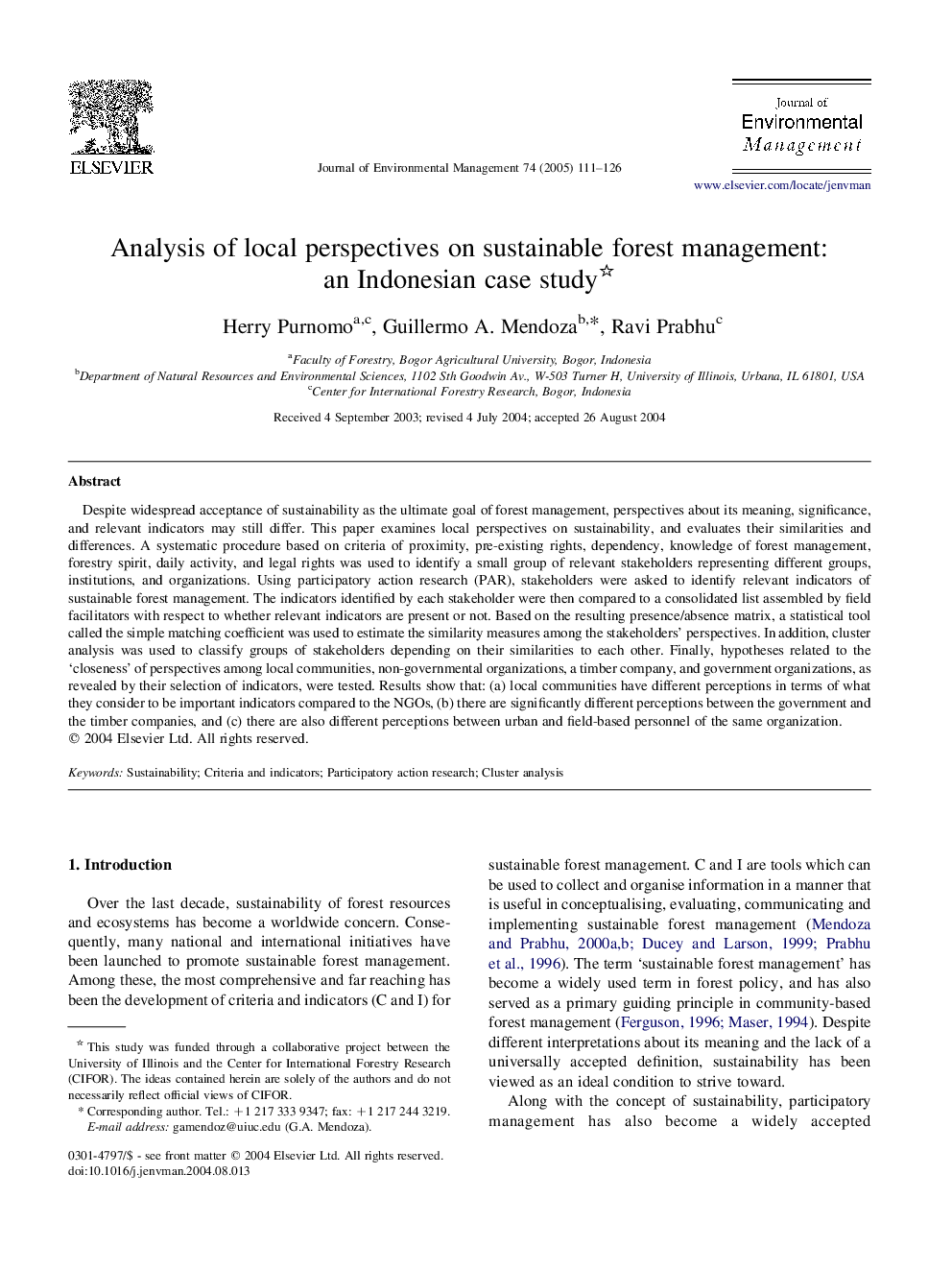| Article ID | Journal | Published Year | Pages | File Type |
|---|---|---|---|---|
| 10505635 | Journal of Environmental Management | 2005 | 16 Pages |
Abstract
Despite widespread acceptance of sustainability as the ultimate goal of forest management, perspectives about its meaning, significance, and relevant indicators may still differ. This paper examines local perspectives on sustainability, and evaluates their similarities and differences. A systematic procedure based on criteria of proximity, pre-existing rights, dependency, knowledge of forest management, forestry spirit, daily activity, and legal rights was used to identify a small group of relevant stakeholders representing different groups, institutions, and organizations. Using participatory action research (PAR), stakeholders were asked to identify relevant indicators of sustainable forest management. The indicators identified by each stakeholder were then compared to a consolidated list assembled by field facilitators with respect to whether relevant indicators are present or not. Based on the resulting presence/absence matrix, a statistical tool called the simple matching coefficient was used to estimate the similarity measures among the stakeholders' perspectives. In addition, cluster analysis was used to classify groups of stakeholders depending on their similarities to each other. Finally, hypotheses related to the 'closeness' of perspectives among local communities, non-governmental organizations, a timber company, and government organizations, as revealed by their selection of indicators, were tested. Results show that: (a) local communities have different perceptions in terms of what they consider to be important indicators compared to the NGOs, (b) there are significantly different perceptions between the government and the timber companies, and (c) there are also different perceptions between urban and field-based personnel of the same organization.
Related Topics
Physical Sciences and Engineering
Energy
Renewable Energy, Sustainability and the Environment
Authors
Herry Purnomo, Guillermo A. Mendoza, Ravi Prabhu,
